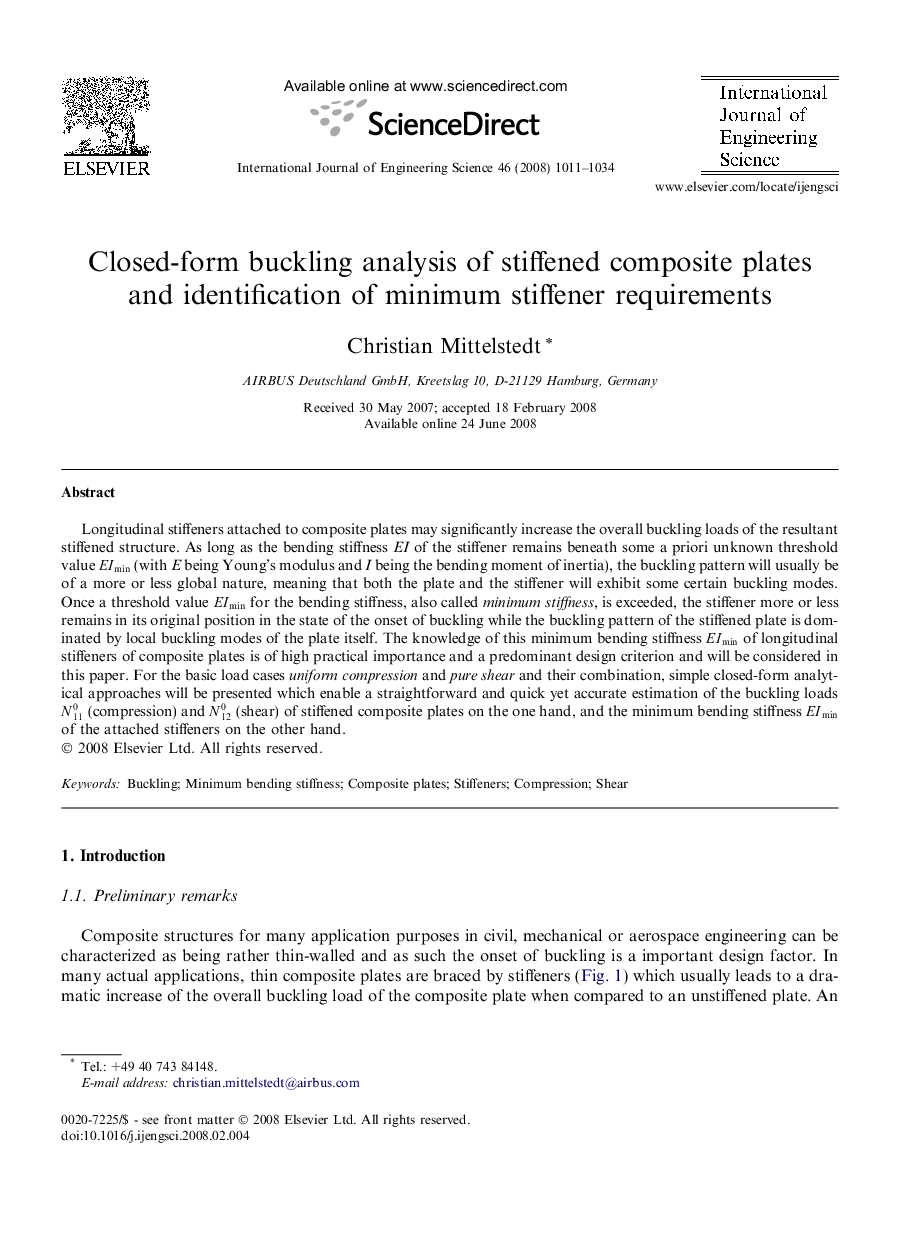| Article ID | Journal | Published Year | Pages | File Type |
|---|---|---|---|---|
| 825615 | International Journal of Engineering Science | 2008 | 24 Pages |
Longitudinal stiffeners attached to composite plates may significantly increase the overall buckling loads of the resultant stiffened structure. As long as the bending stiffness EI of the stiffener remains beneath some a priori unknown threshold value EIminEImin (with E being Young’s modulus and I being the bending moment of inertia), the buckling pattern will usually be of a more or less global nature, meaning that both the plate and the stiffener will exhibit some certain buckling modes. Once a threshold value EIminEImin for the bending stiffness, also called minimum stiffness , is exceeded, the stiffener more or less remains in its original position in the state of the onset of buckling while the buckling pattern of the stiffened plate is dominated by local buckling modes of the plate itself. The knowledge of this minimum bending stiffness EIminEImin of longitudinal stiffeners of composite plates is of high practical importance and a predominant design criterion and will be considered in this paper. For the basic load cases uniform compression and pure shear and their combination, simple closed-form analytical approaches will be presented which enable a straightforward and quick yet accurate estimation of the buckling loads N110 (compression) and N120 (shear) of stiffened composite plates on the one hand, and the minimum bending stiffness EIminEImin of the attached stiffeners on the other hand.
